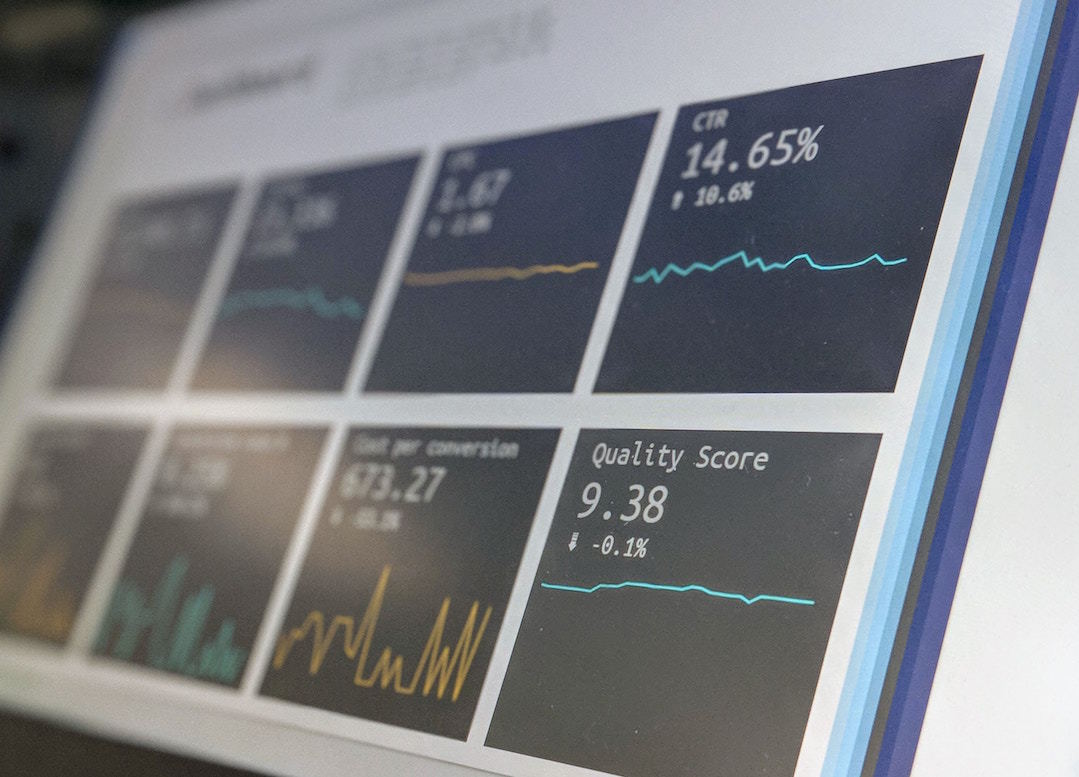For Google News
A Comprehensive Guide to Connecting Content Marketing KPIs to Business Goals
By Kyle Harper on December 4, 2018
It's the information age, and marketers are flooded with data. There are so many great reporting options to wade through in our ever-increasing sea of analytics that we can't always tell where we should dive deep. This is why well-chosen content marketing KPIs are more essential than ever. Knowing the right KPIs to track can help sort out the most important performance information from the noise. A primary difficulty when choosing the right key performance indicators is knowing how each metric serves specific business objectives.
We track an enormous amount of data points because (presumably) they each tell us something important about our company. But how can you quickly determine which metrics are worth tracking and easily understand how each value relates to your overall performance?
Understanding Which KPIs Are Worth Your Attention
All good KPIs should be directly aligned with your team's goals and illustrate ROI. KPIs should remain relevant over any given window of time and should be comparable to previous periods or future projections. Lastly, any valuable KPI needs to have a clearly distinguishable tactical worth. When you see movement in a KPI, your team should be able to tie that movement back to actual marketing activities. Positive growth might lead to a review of what's working well, while negative movement can prompt ideation for new activities.
Keeping these characteristics in mind can be difficult for content marketers in particular because content work spans so many disciplines. We have to keep track of editorial workflow, search performance, and a slew of other publication and lead driving metrics that all connect and overlap to inform your strategy. This can be made more manageable, however, by assigning KPIs for each stage of your content creation and publication pipeline. Once you've chosen which KPIs you should be tracking, here's how you can easily understand what business concerns each of those pieces of data is really answering.
Image attribution: Jonathan Farber
Stage 1: Content Creation
While your organization might be focused on the outcomes of your content campaigns, every content marketing manager knows that ideation and creation is where many battles are won or lost. Good KPIs to track at this stage should help you understand whether your pipeline is growing or shrinking, whether your creatives are producing good ideas, and whether you're keeping costs under control in the process.
Ideation Volume
This is the top of the funnel when it comes to content creation: how many pitches or ideas are you generating in a given time frame? As your content engine expands-whether you're bringing on new creatives, increasing editorial support for your creators, or ramping up your production-you should likewise see an increase in this metric.
To inform the quality of your ideas, it is also helpful to keep an eye on idea-to-creation conversion, which is simply the number of ideas received in a time frame divided by the number of ideas actually pushed to production. You want to see this ratio hover somewhere just shy of one, to avoid encouraging "throwaway" ideas and ensure that your team is utilizing pitches.
This KPI addresses the question: "Are our ideas timely and aligned with our ongoing content strategy?"
Publishing Cadence
After ideation comes content creation, and that's where publishing cadence becomes a powerful metric. Simply calculated as the number of new pieces of content produced in a given time period, publishing cadence is a KPI that should steadily grow with your content team as they expand their work and audience.
When you see cadence stagnate, it tells your team to reexamine your editorial workflow. Have you been increasing your creator pool but downsizing the amount of work performed by each creator at the same time? Any number of editorial shifts can affect cadence, and this KPI will give you an early heads-up when something is (or is not) working well.
This KPI addresses the question: "Is our current content creation process efficient and sustainable?"
Cost per Content
Cost per content is a derived KPI that takes into account per case costs associated with your publications. This would include items like creator pay rates if you're working with freelancers, production expenses if you're producing rich media like video, and promotional costs if your team targets your content with paid advertising.
This KPI addresses the question: "Are we allocating the right resources to our content efforts?"
Image attribution: Stephen Dawson
Stage 2: Publication and SEO
After your content has been created and pushed to publication, you'll want to keep track of whether it's working!
Content marketing KPIs at this stage will focus on if your content is actually bringing people into an experience with your brand. This means tracking inbound performance from channels like social media, email, affiliate links, and search.
Volume per First Page SERP Position
Essentially, this KPI looks at how frequently your content appears in various positions of a first page SERP. A few years ago, it might have been enough to simply report on the number of first page results your content was landing. But today, an increasing proportion of searchers never look past the first five results of their Google searches. If you want to make sure your content has strong SEO, you'll want to keep track of how frequently your content appears in the first five positions on Google.
Higher volumes of higher positions are healthy, while decreasing position volumes is a sign for concern.
This KPI addresses the question: "Is our content visible and valuable to users?"
Inbound Session Volume by Channel
When it comes to reporting on content, there are a lot of misleading vanity metrics that can obfuscate how your publishing engine is actually performing. To avoid this, particularly when reporting on mediums like social media, it can be helpful to simply look at volume of unique site sessions by source/medium.
Segmenting these channels out makes it easy to report on a number of high-level inbound efforts like social media or referral traffic. Segmenting each of these values further can inform on trends you observe at the high level, like whether particular platforms are performing well for your brand, or if certain referrers are dumping junk traffic onto your site. Ideally, you should see this earned traffic compound over time as your SERP strength grows and your content cadence increases.
This KPI addresses the question: "Are we growing our audience and connecting with consumers?"
Image attribution: Kaleidico
Stage 3: Demonstrating ROI
The last piece of the content marketing puzzle is what your visitors actually do once your content engages them on the website. These KPIs can be some of the hardest to track and report, but are often the most demanded by company leadership to demonstrate ROI. Good KPIs at this stage should look into how your content relates to site interaction, lead generation, and mid-to-bottom funnel conversions.
Attributable Leads and Conversions
How often does your content immediately precede a lead conversion for further communication? Are consistent customers coming to your content for news and informative resources? These questions and many others can be addressed by looking at high-level counts of how your content is interacting with lead and conversion generation.
The only way to track this KPI and accurately tie first touch content interactions to lead generation and opportunity creation is with a content marketing software that is integrated with marketing automation. By connecting your brand storytelling metrics with your marketing automation reporting capabilities, you'll be able to view how all of your content contributes to conversions.
This KPI addresses the question: "How does our content connect with sales goals, drive new leads, and nurture existing ones?"
Maintaining Impact Into the Future
Your brand's unique story might pursue other metrics in importance or prioritize different stages of the production funnel over others. But regardless of your team's bent, the aim should stay the same: succinctly and accurately summarize the different phases of content marketing with metrics that align with your company's goals.
The right KPI doesn't just answer questions, it starts conversations-this is where your team will find the strongest leverage for change and growth.
For more stories like this, subscribe to the Content Standard newsletter.
Featured image attribution: Gregory Hayes




